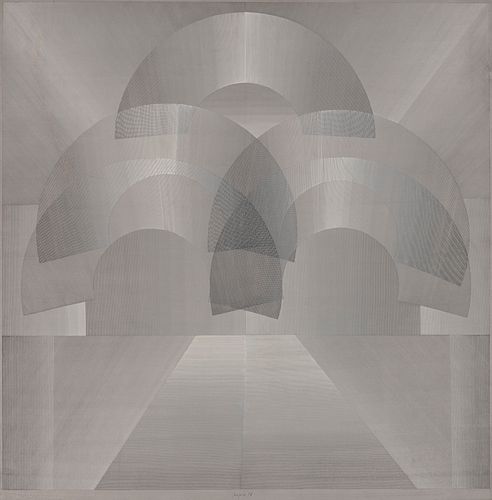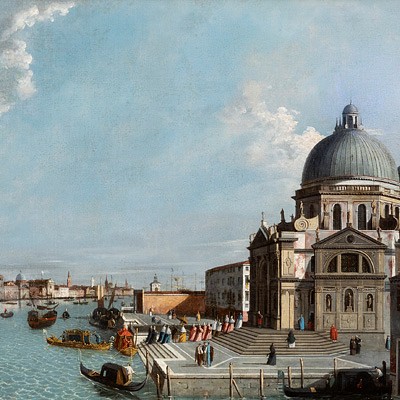EUSEBIO SEMPERE (Onil, Alicante, 1923 - 1985). "The Alhambra", 1978. Oil on panel. Signed and dated in the lower margin.
Lot 43
About Seller
Setdart Auction House
Carrer Aragó 346
Barcelona
Spain
Setdart Subastas was born in 2004 and is currently the first online art auction in Spain with solidity, prestige and reliability guaranteed by our more than 60,000 users. Setdart has a young, dynamic and enterprising team ready to successfully manage the purchase and sale of art works through custom...Read more
Estimate:
EUR€20,000 - EUR€25,000
$21,505.38 - $26,881.72
Absentee vs Live bid
Two ways to bid:
- Leave a max absentee bid and the platform will bid on your behalf up to your maximum bid during the live auction.
- Bid live during the auction and your bids will be submitted real-time to the auctioneer.
Bid Increments
| Price | Bid Increment |
|---|---|
| EUR€0 | EUR€10 |
| EUR€200 | EUR€25 |
| EUR€500 | EUR€50 |
| EUR€1,000 | EUR€100 |
| EUR€3,000 | EUR€200 |
| EUR€5,000 | EUR€500 |
| EUR€10,000 | EUR€1,000 |
| EUR€20,000 | EUR€2,000 |
| EUR€50,000 | EUR€5,000 |
About Auction
By Setdart Auction House
May 18, 2021
Set Reminder
2021-05-18 09:30:00
2021-05-18 09:30:00
America/New_York
Bidsquare
Bidsquare : Classics XIX and XX
https://www.bidsquare.com/auctions/setdart-auction-house/classics-xix-and-xx-6961
The next 18th May there will be a 19th and 20th Century Classics Auction at Setdart.com There will be a select repertoire of important artists such as Carlos Cruz Diez, Luis Feito, Joan Miró, Fernando Botero, Josep Llimona, Salvador Dalí among others. Setdart Auction House sofia@setdart.com
The next 18th May there will be a 19th and 20th Century Classics Auction at Setdart.com There will be a select repertoire of important artists such as Carlos Cruz Diez, Luis Feito, Joan Miró, Fernando Botero, Josep Llimona, Salvador Dalí among others. Setdart Auction House sofia@setdart.com
- Lot Description
EUSEBIO SEMPERE (Onil, Alicante, 1923 - 1985). "The Alhambra", 1978. Oil on panel. Signed and dated in the lower margin. Measures: 61 x 60 cm .; 77 x 75 cm. (Frame). The oriental mysticism that always interested Eusebio Sempere is here magically subjugated to the spiritual pulse that this outstanding figure of kinetic art knew how to extract from the spaces. With a tremendous power of evocation, the architecture and gardens of the Alhambra appear to us as a pure irradiation of energy and contemplative trance. Eusebio was inspired by the Alhambra in Granada in several of his paintings and series of graphic works from the seventies. Sculptor, painter and graphic artist, Sempere is the most representative painter of kinetic art in Spain. He began his studies at the School of Arts and Crafts in Valencia, and in 1941 he entered the School of Fine Arts of San Carlos, in the same city. In 1948 he obtained a scholarship from the SEU that allowed him to travel to Paris, and the following year he settled in the French capital, at the College of Spain in the Cité Universitaire. That same year, 1949, he organizes the First Exhibition of Abstract Art in Valencia, in the Mateu Gallery. In 1953 he makes his first gouaches on paper, and in 1955 he writes the "Manifesto de la Luz" and undertakes his first Relieves Luminosos. At this time he began to learn a serigraphic technique unknown in Spain, and made serigraphs for Vasarely, Mortensen and Bloc, among others. In 1960 he returns to Spain and settles in Madrid, showing his Relieves Luminosos at the Venice Biennale that same year. Also in 1960 he makes the definitive international leap, exhibiting his work at the Berta Schaefer Gallery in New York. In 1961 he held his first solo exhibition at the Ateneo de Madrid, and in 1962 he began the creation of the Rejas, two-piece iron mobiles. The following year he obtains the Ford scholarship to travel to the United States, where he moves in 1964. That same year he exhibits again at the Berta Schaefer Gallery, together with J. M. Subirachs. In the following years he produced his first portfolio of silkscreen prints, a musical mobile sculpture project for IBM and a project for the Parque de Esculturas de La Castellana, in Madrid. In 1969 he participates in the seminar of Analysis and Automatic Generation of Plastic Forms at the Calculus Center of the University of Madrid. Ten years later his hanging sculpture "Helicoidal" is offered as a gift to the Congress of Europe by President Adolfo Suárez, and in 1980 the first anthological exhibition dedicated to his work is held. That same year he received the Gold Medal for Merit in Fine Arts. In the early eighties his health began to suffer seriously, although he continued to work. In 1983 he was awarded the Prince of Asturias Prize for Fine Arts, and was named favorite son of the province by the Provincial Council of Alicante. The following year he was invested Doctor Honoris Causa by the University of Alicante, and named honorary academician by the Royal Academy of Fine Arts of San Carlos and favorite son of the town of Onil. Currently his work is present in the Reina Sofia Museum, the MoMA in New York, the IVAM in Valencia, the Patio Herreriano in Valladolid, the British Museum in London and the National Museum of Western Art in Tokyo, among many others.
- Shipping Info
-
In-House Shipping
-
- Buyer's Premium



 EUR
EUR CAD
CAD AUD
AUD GBP
GBP MXN
MXN HKD
HKD CNY
CNY MYR
MYR SEK
SEK SGD
SGD CHF
CHF THB
THB















